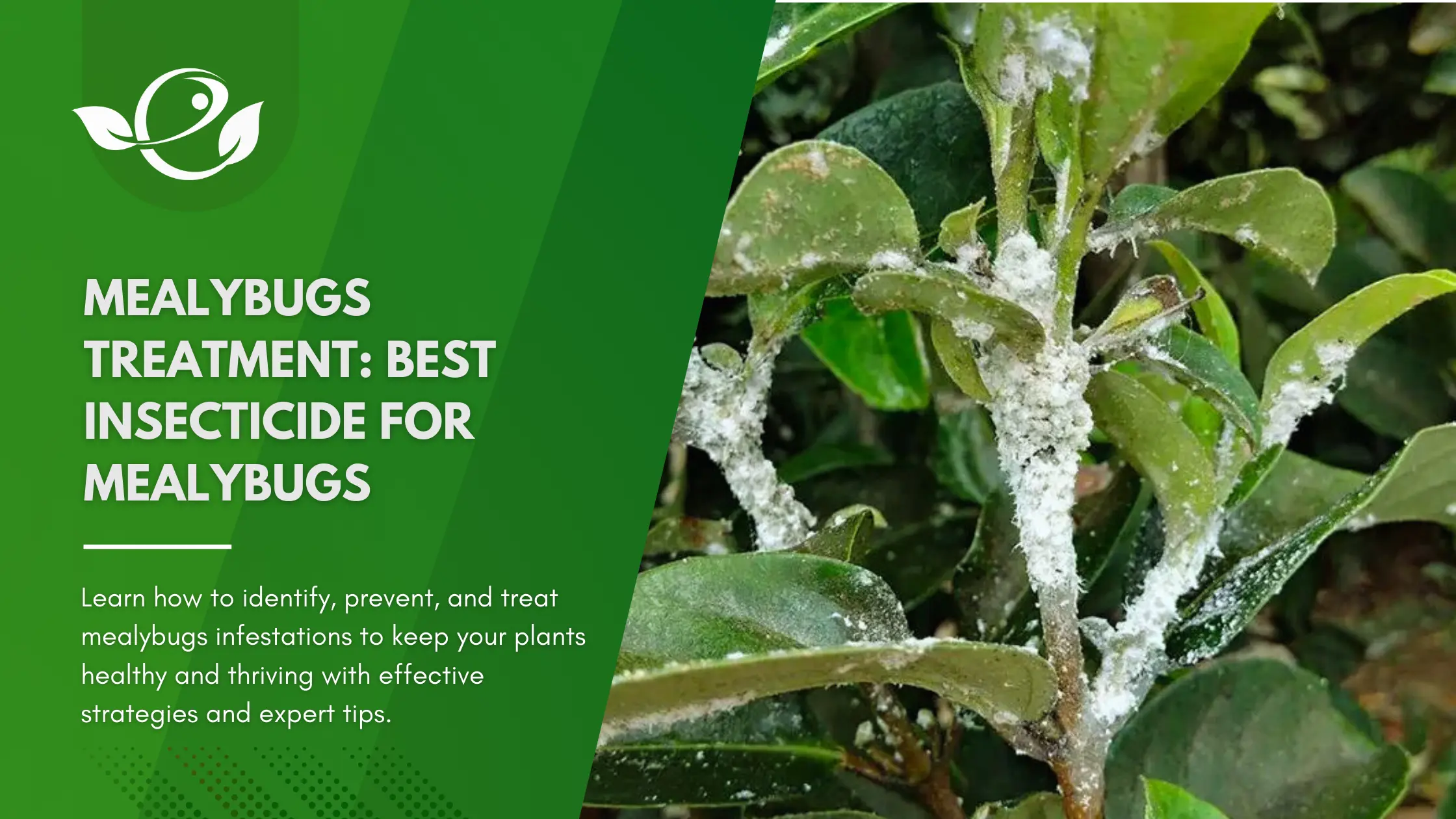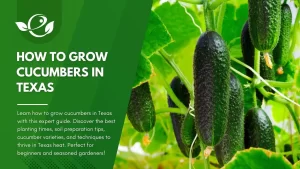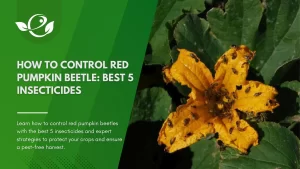Table of Contents
So, you’re living your best plant-parent life, basking in the glory of your lush green indoor jungle, when suddenly you notice something white and fuzzy lurking on your favorite plant. At first, you think it might be a bit of dust, but upon closer inspection, you realize it’s moving. No, it’s not an alien invasion—though it might as well be for your plants. Meet the mealybug, the unwanted guest that shows up uninvited and brings its whole extended family along.
These tiny, sap-sucking pests have a knack for turning your gardening dreams into a nightmare. They’re like the freeloaders of the insect world—taking, taking, and never giving. If you’ve encountered these pests before, you know they don’t just leave on their own. They’re stubborn, and if you don’t take swift action, your plants might end up looking like they’ve been through a cotton-candy apocalypse. But don’t worry! By the end of this guide, you’ll be fully equipped to evict these uninvited guests for good.
So, buckle up, grab your gardening gloves, and let’s dive into the nitty-gritty of mealybug management.
Identifying Mealybugs
Physical Characteristics
Mealybugs are small, soft-bodied insects that are usually covered with a white, powdery wax. This waxy coating gives them a cottony appearance, making them easy to spot on your plants. Adult female mealybugs are typically 1/10 to 1/4 inch long and have a distinctly oval shape. They lack wings but possess well-developed legs, allowing them to crawl slowly across plant surfaces.
Male mealybugs, on the other hand, are much smaller, often less than 1/16 inch long. They have wings and can fly, but thankfully, they don’t feed on plants. Instead, their primary role is reproduction, and after mating, they die shortly afterward.
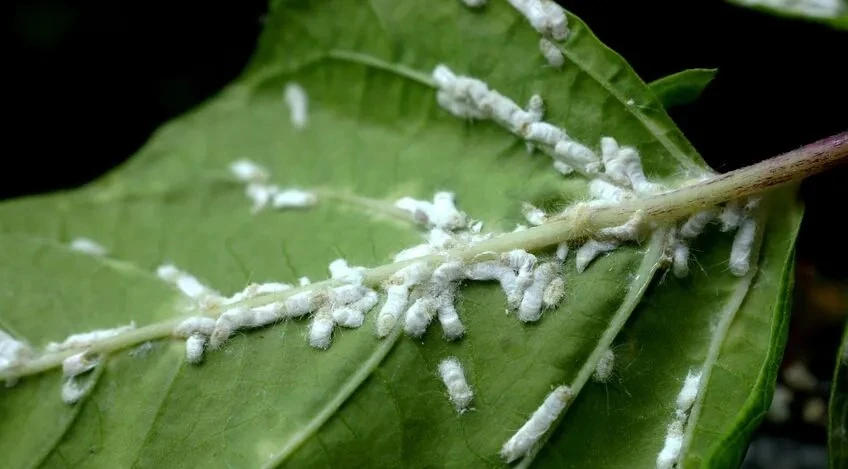
What caused it?
Mealybugs are oval, wingless insects found in warm or temperate climates. Their body is protected by a layer of thin mealy wax that gives them a cottony appearance. They insert their long piercing and sucking mouthparts (stylets) into plant tissues and suck the sap out of them. The symptoms are a reaction to the toxic substances that they inject into plants while feeding. The eggs of the mealybug are also laid in the soil.
After hatching, nymphs and adults can crawl to neighboring plants. They can also be dispersed over large distances by wind, ants, animals, birds or simply during fieldwork activities such as pruning or harvesting. They have an array of alternative hosts such as eggplant and sweet potato, as well as many weeds. Warm temperatures and dry weather favor their life cycle and the severity of the symptoms.
Commonly Affected Plants
Mealybugs aren’t particularly picky eaters, which is why they’re such a widespread problem. They are known to infest a wide range of plants, including houseplants, ornamentals, fruit trees, and vegetables.
Some of their favorite targets include:
- Cacti and Succulents: Mealybugs love to hide in the crevices and roots of succulents, making them difficult to spot.
- Citrus Trees: Citrus mealybugs are notorious for infesting fruit trees, particularly lemon and orange trees.
- Tropical Plants: Orchids, ferns, and palms are also commonly targeted by mealybugs.
- Herbaceous Plants: Plants like coleus, hibiscus, and geraniums are frequently affected.
Banana, Bean, Bitter Gourd, Citrus, Coffee, Cotton, Cucumber, Brinjal, Black & Green Gram, Grape, Guava, Lentil, Mango, Cassava, Melon, Okra, Ornamental, Papaya, Pea, Peanut, Pear, Capsicum & Chilli, Pigeon Pea & Red Gram, Pomegranate, Potato, Pumpkin, Rice, Sorghum, Soybean, Sugarcane, Tobacco, Tomato, Zucchini.
Understanding which plants are more susceptible to mealybug infestations can help you monitor them more closely and take preventive measures.
Signs/Symptoms of mealybugs Infestation
Spotting a mealybug infestation early can make a significant difference in controlling these pests. One of the first signs you’ll notice is the presence of white, cotton-like masses on your plants. These clusters are usually found in the crevices where leaves join stems or along the veins of leaves.
- White cotton-like masses made of flocks of bugs appear on the underside of leaves, stems, flowers, and fruits.
- Infestations can lead to yellowing and curling of young leaves, stunted growth of plants and early fall of fruits.
- The bugs excrete honeydew during sap-sucking and this makes the tissues sticky and prone to be colonized by opportunistic bacteria and fungi. This shiny, sticky surface often attracts sooty mold, a black fungus that thrives on the sugary substance.
- Fruits are particularly susceptible to be attacked and may become deformed or completely coated by wax secretions.
- Ants may be attracted by the honeydew and may spread the pest to other plants.
- Older leaves are less likely to become deformed or distorted.
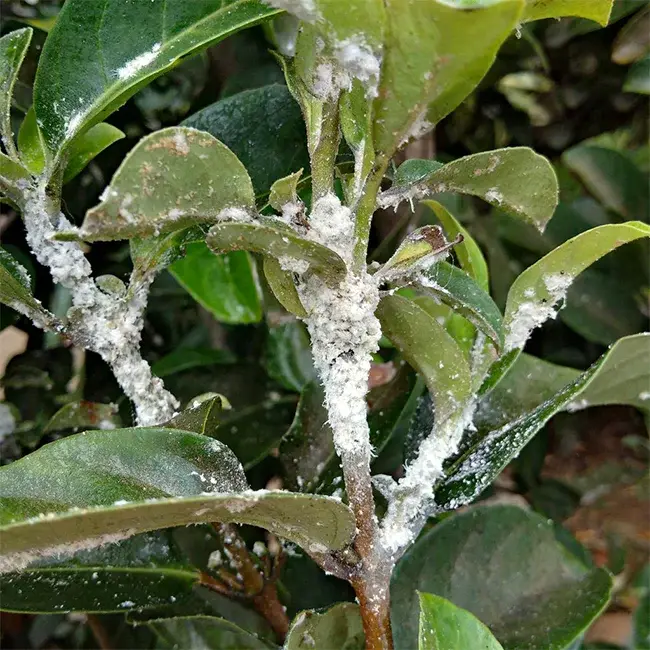

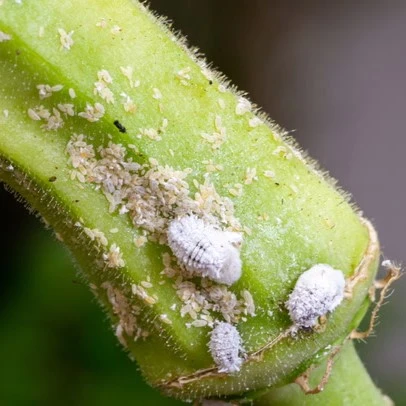
Preventing Mealybug Infestations
Healthy plants are less likely to suffer from mealybug infestations. Keeping your plants in top condition is your first line of defense against these pests. Here’s how you can do it:
- Regular Inspection: Make it a habit to inspect your plants regularly, especially those that are more prone to infestations. Look for early signs of mealybugs, such as white, waxy deposits or honeydew.
- Proper Watering: Overwatering or underwatering can stress your plants, making them more susceptible to pests. Water your plants according to their specific needs, ensuring they receive the right amount of moisture.
- Fertilization: Over-fertilizing can lead to excessive new growth, which is particularly attractive to mealybugs. Use fertilizers according to the recommended guidelines and avoid overfeeding your plants.
- Use seeds or transplants from healthy plants or from certified sources.
- Monitor the field regularly for signs of the pest.
- Remove and destroy infested plants or plant parts.
- Eradicate weeds in and around the field.
- Do not grow other susceptible crops in the area.
- Take great care not to spread the mealybugs during fieldwork.
- Encourage the population of predators with good field practices, for example with the use of insecticide specific for mealybugs.
- Follow a balanced and well-timed fertilization program.
- Avoid flood irrigation of the crop during the season.
- Control ants with sticky bands on the trunk or branches.
- Disinfect equipment and tools.
- Practice crop rotation with susceptible plants.
Introducing new plants to your garden or home can be a joyous occasion, but it’s also a potential entry point for mealybugs. To prevent spreading these pests to your existing plants, follow these steps:
- Isolation: When you bring a new plant home, keep it isolated from your other plants for at least two weeks. This quarantine period allows you to observe the plant for any signs of mealybugs or other pests.
- Inspection: During the quarantine period, inspect the plant thoroughly. Check the undersides of leaves, stems, and any crevices where mealybugs might hide. Use a magnifying glass if necessary.
- Treatment: If you spot any mealybugs on the new plant, treat it immediately before moving it to your main collection.
How to Treat Mealybug Infestations
Manual Removal
When it comes to small infestations, sometimes the best approach is the simplest—manual removal. Here’s how you can do it effectively:
- Cotton Swab and Alcohol: Dip a cotton swab in rubbing alcohol (70% isopropyl alcohol) and gently dab it on the mealybugs. The alcohol dissolves the waxy coating on their bodies, killing them on contact. Be sure to reach into all the nooks and crannies where they might be hiding.
- Water Spray: For larger infestations, you can use a strong stream of water to dislodge mealybugs from your plants. This method works best for outdoor plants or those that can be moved to a sink or shower.
- Pruning: If the infestation is localized to a few areas, consider pruning the affected parts of the plant. Dispose of the pruned material in a sealed bag to prevent spreading the mealybugs to other plants.
Using Natural Predators
In the wild, mealybugs have natural enemies that keep their populations in check. You can take advantage of these beneficial insects to control mealybug infestations in your garden:
- Ladybugs: Ladybugs, particularly the species Cryptolaemus montrouzieri, are voracious predators of mealybugs. They are often referred to as “mealybug destroyers” because they specifically target and feed on these pests.
- Parasitic Wasps: Certain species of parasitic wasps, such as Leptomastix dactylopii, lay their eggs inside mealybugs. When the eggs hatch, the larvae consume the mealybugs from the inside out.
- Attracting Beneficial Insects: Planting a diverse range of flowers and herbs can attract beneficial insects to your garden. Plants like dill, fennel, and yarrow are particularly good at attracting ladybugs and other predators.
Environmental Control
Creating an environment that is less conducive to mealybugs can help prevent infestations:
- Humidity: Mealybugs thrive in warm, humid conditions. Reducing humidity levels around your plants, especially indoors, can make it less hospitable for these pests.
- Temperature: Keeping your plants in a stable environment with temperatures that are neither too hot nor too cold can help reduce stress, making them less vulnerable to mealybug infestations.
- Neem Oil and Insecticidal Soap: Regular applications of neem oil or insecticidal soap can act as a preventive measure. These products are safe for most plants and can help deter mealybugs from establishing themselves.
Insecticidal Treatments
If manual removal isn’t enough, you may need to turn to insecticidal treatments. Here are some options:
- Systemic Insecticides: Systemic insecticides are absorbed by the plant and circulate through its tissues. When mealybugs feed on the treated plant, they ingest the insecticide and die. Systemic insecticides are particularly effective for severe infestations, but they should be used with caution, as they can affect beneficial insects as well.
- Contact Insecticides: Contact insecticides kill mealybugs on contact. These are typically sprayed directly onto the infested areas. Look for products labeled for use against mealybugs and follow the manufacturer’s instructions carefully.
- Organic Insecticides: For a more eco-friendly approach, consider using organic insecticides such as neem oil, insecticidal soap, or horticultural oils. These products are effective against mealybugs and have minimal impact on beneficial insects and the environment.
Biological Controls
At the first sign of slight infestation, smear the colonies of mealybugs with a cotton bud imbued with oil or spirit. You can spray the plants with insecticidal soap. Nearby plants should be sprayed with neem oil or pyrethrins in order to prevent the spread of the population. Natural antagonists include the green lacewing, parasitoid wasps, hoverflies, ladybird beetles, mealybug destroyer and the predator butterfly Spalgis epius.
- Cryptolaemus montrouzieri: As mentioned earlier, these beetles are natural predators of mealybugs. They can be purchased from garden suppliers and released onto infested plants. Once released, they actively seek out and consume mealybugs, reducing the infestation.
- Parasitic Wasps: Parasitic wasps can also be introduced to control mealybugs. These wasps lay their eggs inside mealybugs, leading to the eventual death of the host. While this method is more commonly used in greenhouses or commercial settings, it can also be effective in home gardens.
Chemical Control
Always consider an integrated approach with preventive measures together with biological treatments if available. Treatments against mealybug are difficult because they are protected from adverse environmental conditions by their waxy layers and fibers. However, foliar spray with solutions based on imidacloprid, acetamiprid and chlorpyrifos can be effective against mealybugs.
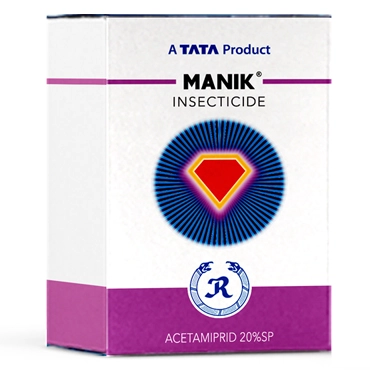
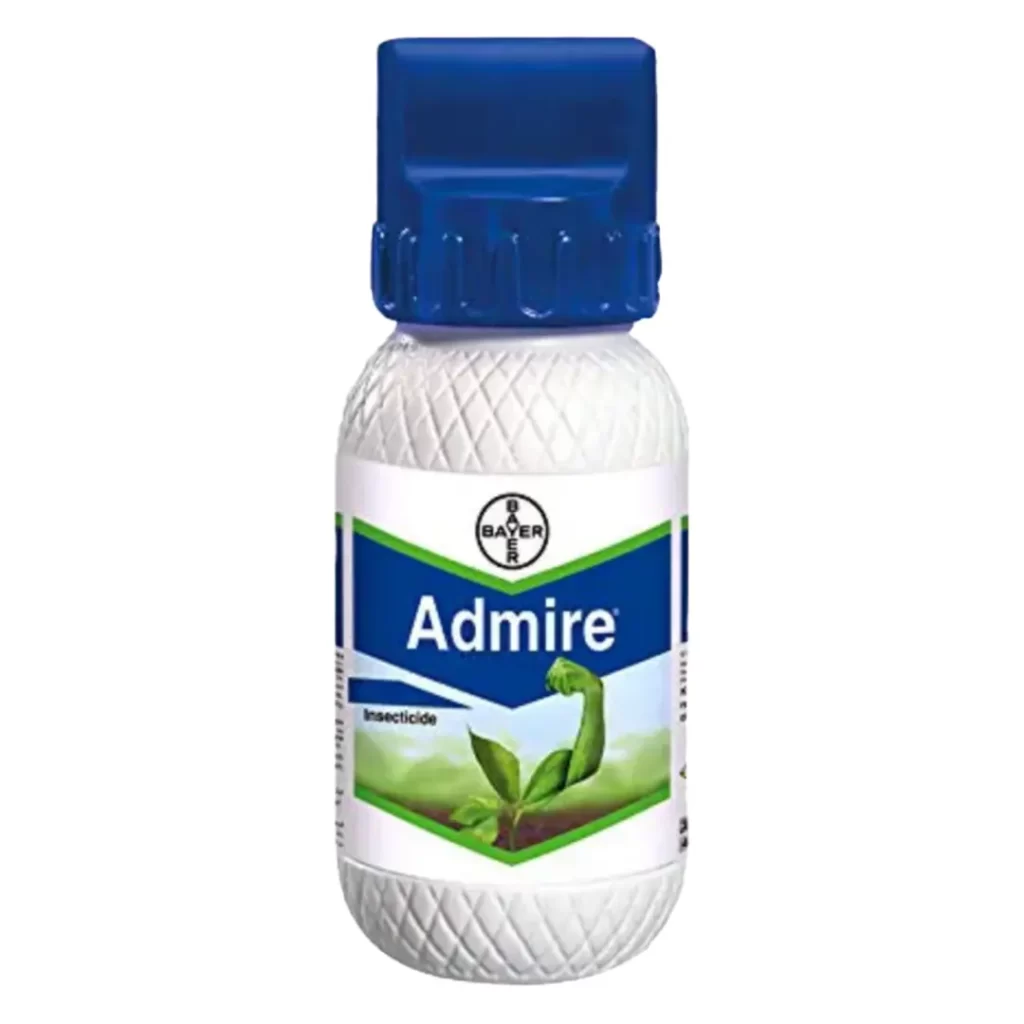

Homemade Remedies
If you prefer a DIY approach, several homemade remedies can help control mealybugs:
- Soap Spray: Mix a few drops of dish soap with water in a spray bottle and apply it to the affected areas. The soap suffocates the mealybugs by disrupting their cell membranes.
- Alcohol Solution: Create a solution of one part rubbing alcohol to three parts water and spray it onto the mealybugs. This solution is similar to the cotton swab method but can cover larger areas.
- Garlic or Chili Spray: Blend garlic or chili peppers with water and strain the mixture into a spray bottle. The strong odor and compounds in these ingredients can deter mealybugs and other pests.
Repeated Treatments
One treatment is often not enough to completely eradicate a mealybug infestation. Understanding the mealybug lifecycle is crucial in effectively controlling them:
- Lifecycle of Mealybugs: Mealybugs go through several stages, including egg, nymph, and adult. Eggs hatch into nymphs, which are smaller and less noticeable but just as damaging. Since different life stages can be present simultaneously, it’s essential to treat the infestation multiple times to target all stages.
- Persistence and Monitoring: Continue to monitor your plants regularly after treatment. Reapply treatments every few days or as recommended by the product until you no longer see signs of mealybugs.
Post-Treatment Care
Monitoring for Reinfestation
After successfully treating a mealybug infestation, it’s crucial to remain vigilant to prevent a reinfestation:
- Regular Inspections: Continue to inspect your plants regularly, especially those that were previously infested. Look for any new signs of mealybugs, such as white waxy deposits or honeydew.
- Sticky Traps: Use sticky traps around your plants to catch any wandering mealybugs. These traps can help you detect new infestations early.
Strengthening Plant Health
Helping your plants recover from a mealybug infestation involves more than just eliminating the pests. You also need to focus on restoring the health and vigor of your plants:
- Fertilization: Provide your plants with the nutrients they need to recover. Use a balanced fertilizer to encourage healthy new growth.
- Pruning: Remove any damaged or dead leaves and stems to allow the plant to focus its energy on new growth.
- Watering: Ensure your plants are receiving the correct amount of water. Stressed plants are more susceptible to future infestations, so maintaining proper moisture levels is key.
Long-term Prevention Strategies
To avoid dealing with mealybugs in the future, implement long-term prevention strategies:
- Integrated Pest Management (IPM): Adopt an IPM approach that includes regular monitoring, proper plant care, and the use of natural predators and organic treatments as needed.
- Avoid Overcrowding: Give your plants enough space to breathe. Overcrowded plants are more likely to develop pest problems due to reduced airflow and increased humidity.
- Healthy Plant Practices: Continue with good plant care practices, including proper watering, fertilization, and pruning. A healthy plant is the best defense against pests.
Conclusion
Mealybugs may be small, but their impact on your plants can be significant. By understanding their behavior, identifying infestations early, and using a combination of prevention and treatment methods, you can effectively control mealybug populations and keep your plants healthy and thriving.
Remember, the key to successful mealybug control is persistence. Whether you’re using manual removal, insecticidal treatments, or natural predators, staying vigilant and following up with regular monitoring and care will help you keep these pesky invaders at bay.
So, the next time you spot that telltale white fuzz on your plants, don’t panic! Armed with the knowledge and strategies from this guide, you’re ready to take on the mealybug menace and emerge victorious.
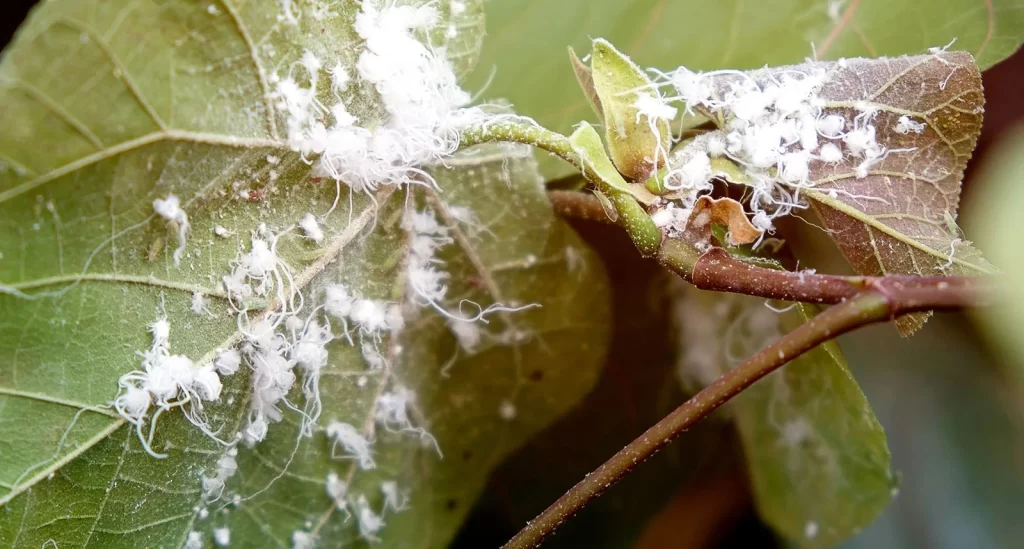
FAQ
Is mealybug harmful to humans?
Mealybugs are not harmful to humans. They do not bite, sting, or transmit diseases to people. However, they can cause significant damage to plants, making them a nuisance for gardeners and plant owners.
Is baking soda good for mealybugs?
Baking soda is not typically used as a direct treatment for mealybugs. It is more commonly used as a fungicide or to alter the pH of the soil. While some people might mix baking soda with other ingredients to create a pest control solution, there are more effective treatments specifically targeting mealybugs, such as insecticidal soap, neem oil, or rubbing alcohol.
What happens if you don’t treat mealybugs?
Plant Damage: Mealybugs suck sap from the plant, leading to yellowing leaves, stunted growth, and in severe cases, the death of the plant.
Honeydew and Sooty Mold: Mealybugs excrete a sticky substance called honeydew, which can attract sooty mold—a black fungus that can further harm the plant.
Spread of Infestation: Mealybugs can spread to nearby plants, increasing the scope of the problem and making it harder to control.
Is Dettol safe for plants?
Dettol (a brand of antiseptic liquid) is not safe for plants. It contains chemicals that can be harmful to plant tissue, causing leaf burn, wilting, or even killing the plant. It’s better to use products specifically designed for pest control in plants, such as insecticidal soaps or neem oil.
Can vinegar get rid of mealybugs?
Vinegar can be used to get rid of mealybugs, but it must be diluted properly to avoid harming the plant. A common method is to mix vinegar with water in a 1:3 ratio (one part vinegar to three parts water) and spray it directly onto the mealybugs. Vinegar’s acidity can kill the mealybugs, but be cautious as it can also damage delicate plant tissues if not diluted enough.
What is the fastest way to get rid of mealybugs?
Manual Removal: Use a cotton swab dipped in rubbing alcohol (70% isopropyl alcohol) to dab directly on the mealybugs. The alcohol dissolves their protective coating, killing them quickly.
Insecticidal Soap or Neem Oil: Apply insecticidal soap or neem oil to the affected areas. These products are effective in killing mealybugs on contact and can prevent future infestations.
High-Pressure Water Spray: For outdoor plants, you can use a strong stream of water to knock the mealybugs off the plant. This method is quick but may require repeated applications.
